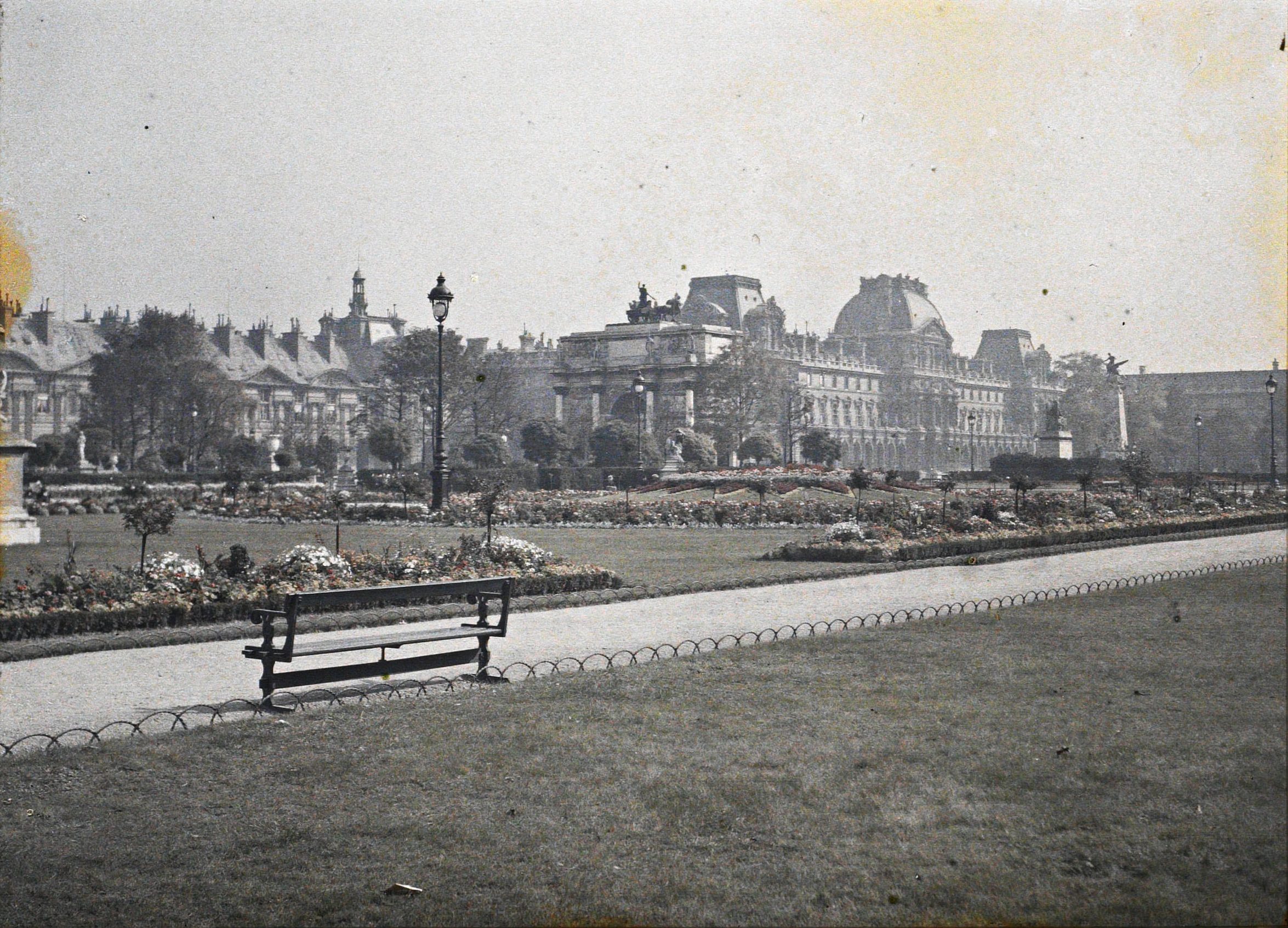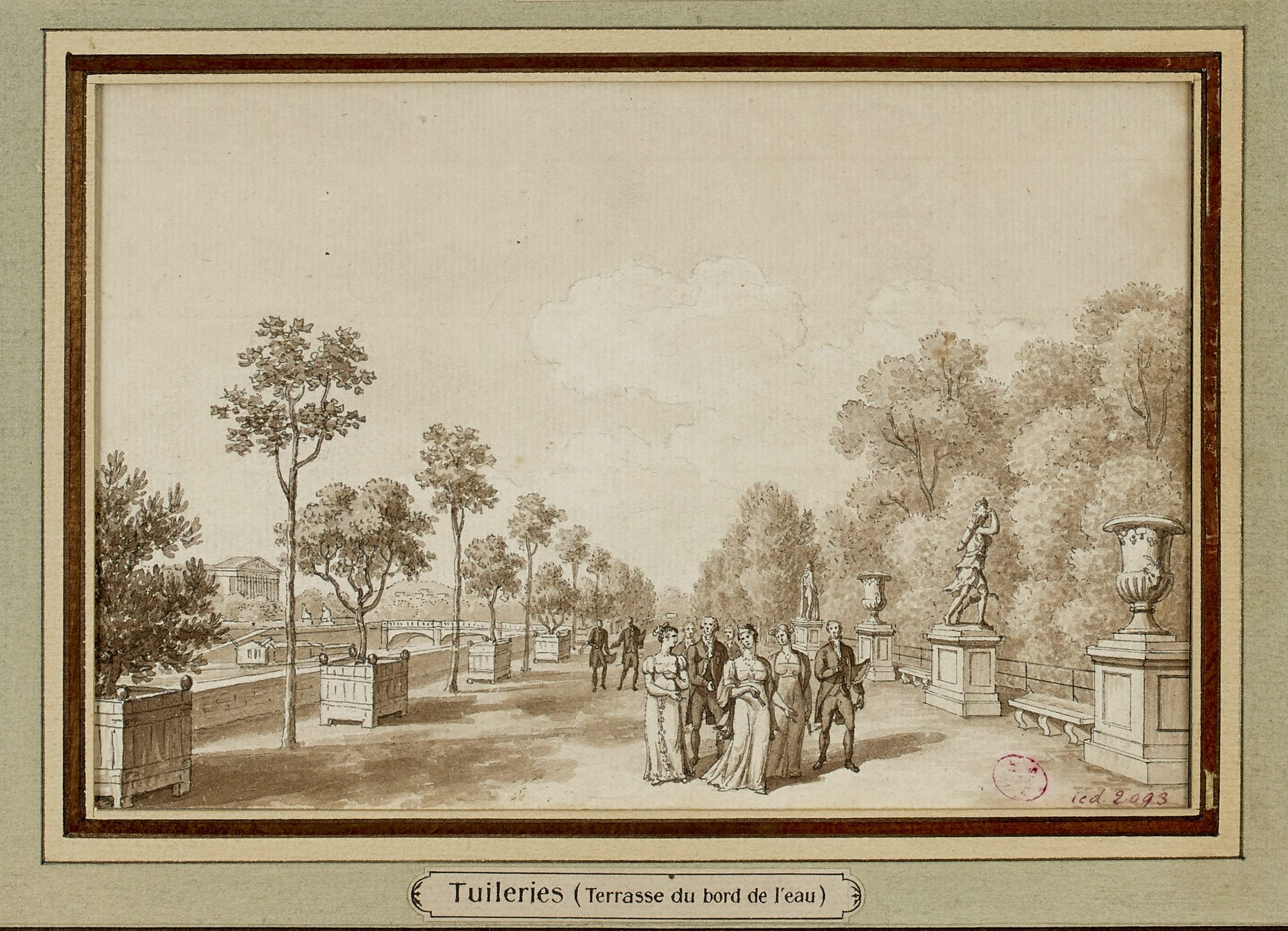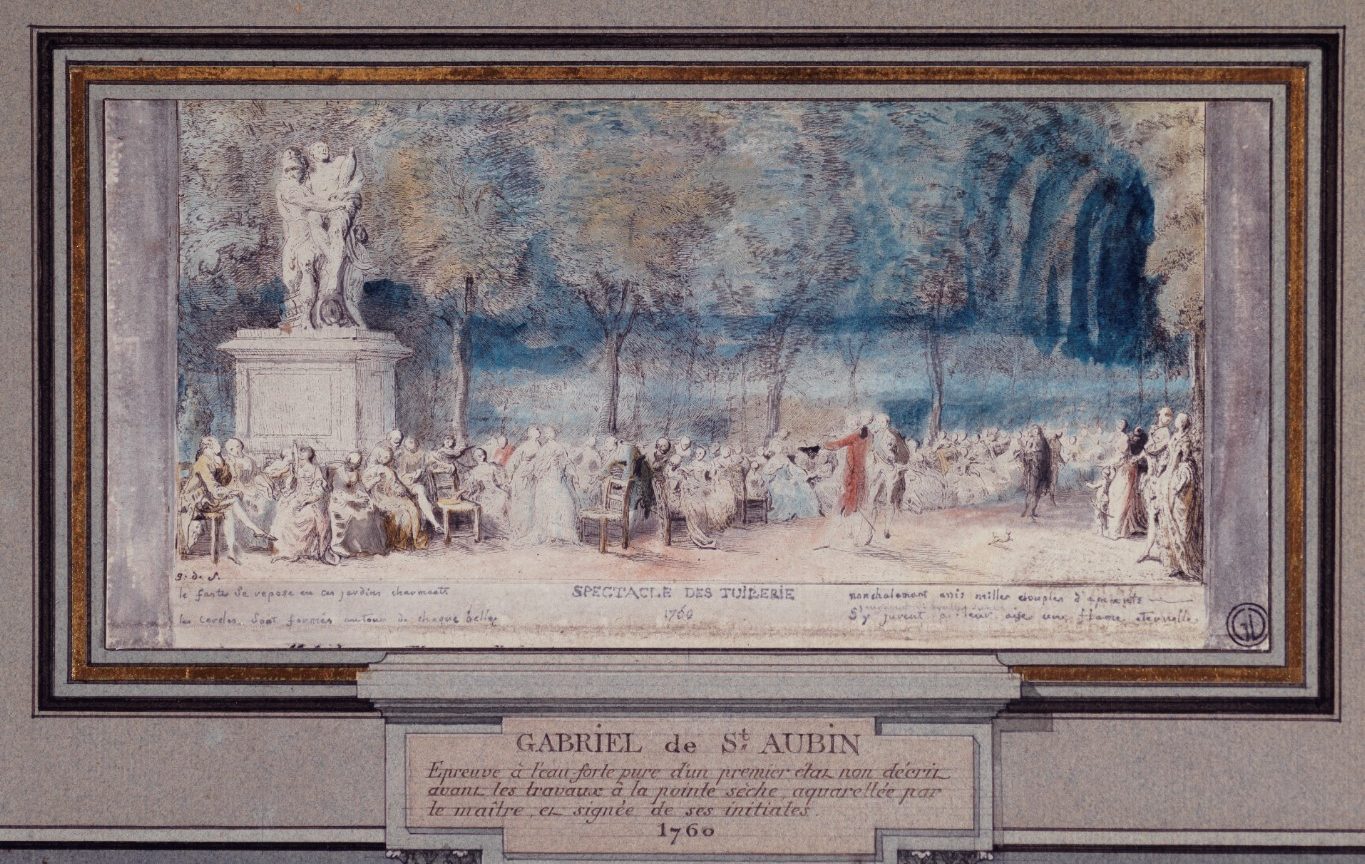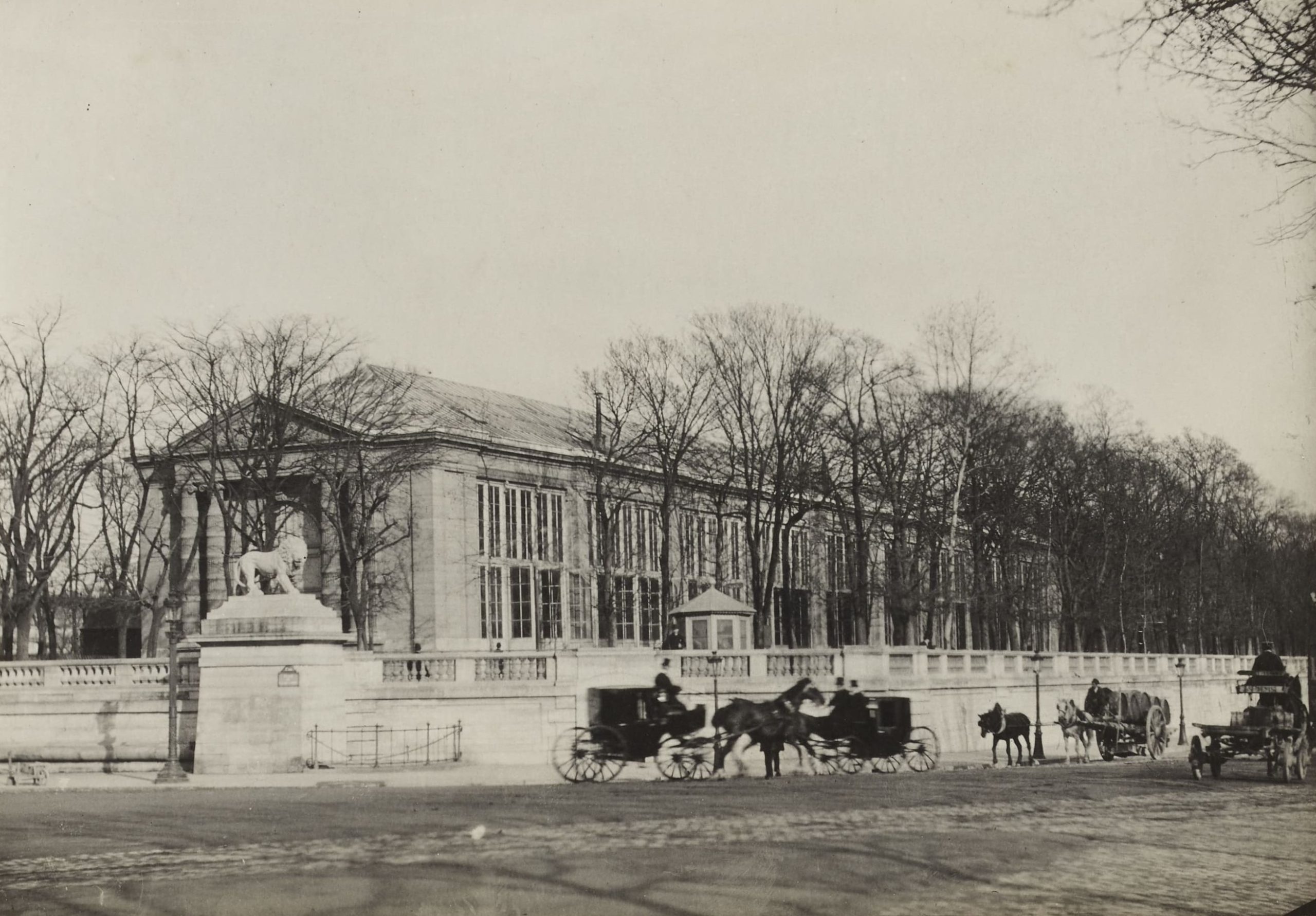
- Chronicle
The Tuileries Garden benches, a subject of literature
Guy de MAUPASSANT, Notre Cœur, 1889-1890
translated as A Woman’s Pastime, 1903, St. Dunstan Society
[The novel’s protagonist is meeting his mistress in the Tuileries Garden; she instructs him to come to the Terrasse du Bord-de-l’Eau, near the Orangerie]
‘You are very imprudent! You must not show yourself like that; I saw you almost from the Rue de Rivoli. Come, we will go and take a seat on a bench yonder. There is where you must wait for me next time.’
He could not help asking her: ‘So you come here often?’
‘Yes, I have a great liking for this place, and as I am an early walker I come here for exercise and to look at the scenery, which is very pretty.’
[…]
They were sitting on a bench near the stone balustrade that runs along the river, almost alone, invisible from every quarter. The only living beings to be seen on the long terrace at that hour were two gardeners and three nursemaids.
Carriages were rolling along the quay at their feet, but they could not see them; footsteps were resounding upon the adjacent sidewalk, over against the wall that sustained the promenade; and still unable to find words in which to express their thoughts, they let their gaze wander over the beautiful Parisian landscape that stretches from the Île Saint-Louis and the towers of Nôtre-Dame to the heights of Meudon.
Découvrez les
Chroniques du Jardin
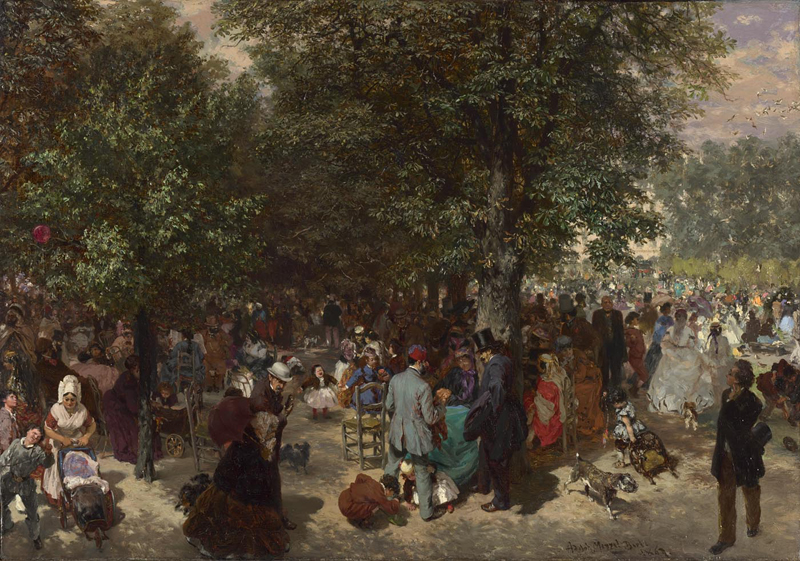
- Chronicle
